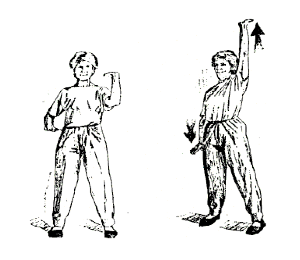
This past school year was fascinating. Not only did I show up once a week to work with each of the seventh grade classes, but I also had the privilege of working with those in the eighth grade who chose to learn mindfulness each week.
I found patterns of behaviour in the classes that showed up as those respecting one another, and able to listen and accept another’s point of view, to those who did what they could to make noise, to deliberately cause torment to others.
The wonderful kids from the small Special Ed class found themselves enjoying the creation of meditation cushions. Other classes enjoyed the challenges of making origami lotus flowers, or working on a special dance challenging their coordination.
But the very favorite exercise in every one of my classes involved mandalas.
The exercises took various forms.
The first exercise involved the following: choosing only one coloured marker, and one mandala outline and then listening to the instructions. They were to start colouring until the sound of the tibetan singing bowl. Upon hearing it, to put down the marker and pass their drawing to the pupil sitting on their right. I encouraged them to add their own personality to the drawing and/or to inject a little beauty if they wished. After the initial shock of hearing the bell and being told to stop working, even if they found themselves in the middle of a vital piece of the mandala, the kids accepted the format and got on with the exercise. At the end they’d receive the drawing that they’d begun with, come to terms with what had become of it, and then add their own final touches.
Then we’d share how it went.
One of the most dramatic versions of this exercise occurred with the Eighth Graders. I put on Zubin Mehta’s version of Ravel’s Bolero, and I had them work for the duration of each musical phrase. As the music rose in drama, my voice would remind them to pay attention to the contact of the pen in their hands, of their feet on the floor or of their shoulders. I’d remind them to breathe.
By the end of the famous climax to the piece, I’d cheer them to embrace their own drawing, having been through the attentions of the rest of the class, and add their own stamp.
It was marvelous and I was in happy disbelief that the number of participants in that day’s class fit perfectly with the number of phrases in Bolero (They were 18 that day? or 17?).
The mandala exercise. Such a delightful personal yet community activity. My drawing graced by the efforts of others. How does it make one feel? Was there a touch of possessiveness? Or anger? Or other emotions? Each one who wished to share, did so, no pressure, but there were many utterly in favour of doing it again.
I felt that this year’s Mindfulness Course offered a bonding opportunity that had been missing in their lives due to the Covid quarantines and the lack of socialization with their peers. Here was an opportunity through exercises of paying attention, of challenging oneself, of attempting to hold silence or to deliberately play with another, for the kids from their various backgrounds and experiences to join minds and work on self-attention and how to stay calm instead of immediate and uncontrolled blurting out or even smacking their neighbour.
For me, it was an opportunity to attempt to make a difference in their day, to offer them a small pocket of time in which they weren’t being yelled at or criticized.
I received a beautiful letter from one pupil, written in Hebrew and I’ll attach it here with a translation.

Thank you very much for the wonderful year filled with relaxation.
Thank you for making us believe in ourselves and to feel that there’s no one like us. And most importantly, the dry shower that helped to wake us up in the morning.
With love,
The pupils of 7-8 and there’s no one like you!
Super Jody (looks like I’m radiating energy!)
Radiating energy! Helping them believe in themselves! I’d say that it’s a letter worth keeping and this teacher’s dream.
May the summer resume more quietly and with less intense heat and other distractions.








